
11 minute read
HauteWELLNESS
BY STEPH KEAY
Jill Dailey, founder of The Dailey Method
WORKING (OUT) FROM HOME
Gyms and fitness studios across the Bay Area exercise their technological savvy to teach classes online.
ON A REGULAR WEEKDAY BEFORE SHELTERING IN PLACE, I WOULD BE HIGH-FIVING
Barry’s Bootcamp instructor Rio Hall as I entered the notorious Red Room at the franchise’s Palo Alto location. I’d grab my weights and walk down the rows of numbered risers along with my classmates, locating our reserved spots for the exercise class ahead. But today, I’m sitting cross-legged on a foam rubber mat in my backyard peering at Hall on the screen of my MacBook Air. He starts the music, and we’re launched into our usual warm-up routine of jumping jacks— except I’m by myself and my classmates are simply tiny figures on the sidebar of the Zoom call.
Over the course of one week, I test out three virtual classes offered by companies around the Bay Area in response to the closure of gyms and fitness studios during the pandemic: Barry’s high-intensity interval training (HIIT) classes, Smuin Contemporary Ballet’s dance lessons, and The Dailey Method’s barre-inspired exercises. With a mat and water bottle in hand, I’m ready to work up a sweat.
FROM RED ROOM TO BEDROOM
Originally hailing from Trinidad and Tobago, Hall leads HIIT classes at Barry’s Bootcamp locations across the Bay Area. Before my first virtual Barry’s At Home class, I worry I don’t have all the right equipment—an in-person Barry’s class often utilizes risers, weights, resistance bands, and treadmills—but the company has pivoted to offer classes where participants can simply use their body weight for exercises. “Having a soft floor or mat is key,” Hall advises. “If you have an arm’s length radius, you should be great.”
We begin with a warm-up to activate the body, and he carries us (and keeps us motivated) through an entire 45-minute class. He carefully plans the order of exercises in his classes to ensure we make the most of our workout, starting with abs to fatigue our core, “which increases difficulty for all other movements.” Next, he follows with major compound movements to maximize energy burn and minor muscle groups to carve. We finish with cardio to use up what’s left our remaining energy (which is little) and cool down with several stretches—a welcome relief after an exhausting but immensely fulfilling class.
Surprisingly, I discover that the sense of community one feels at a Barry’s physical location transfers over to the virtual classes. Having my camera on during the Zoom call keeps me accountable, similar to how I feel at an in-person class. Hall demonstrates the exercises then inspects us onscreen, correcting our form if needed—again, as he would in an in-person class. Lastly, the united feeling that we are all here to improve our health and feel good about ourselves still exists—and it’s almost a bit more intimate, seeing as we get to witness the personal spaces of everyone who is participating in the class (although the camera-shy are welcome to turn theirs off).
I come away with the thought that these classes, although not quite a replacement for the regular classes, are a worthy alternative—especially if studios won’t be able to resume operation normally for quite some time. Speaking about how the pandemic has affected the way people view fitness at home, Hall says, “There are two camps—people who love the convenience and those who miss the community and intensity.”
Senior instructor Allie Evans agrees. “I think now people are realizing they get an amazing workout at home—even those who say they don’t have time to work out,” she says. “The fact that you can wake up and be ready for your workout is the best. At the same time, there is something so magical about that in-person workout and human interaction, face-to-face. I think we’ll be seeing people both in the physical Red Room and the continuing Barry’s At Home [program]. There is enough room for both spaces to thrive.”
Although I do adore the sense of community and ability to interact in person at a regular class, there is certainly something to be said about not having to wake up at 5:30 a.m. to make the drive up to the studio, find parking, and deal with lines for the shower. Barry’s has even sought to help customers recreate the Red Room environment at home, offering everything from a set of branded risers to red light bulbs in their online shop.
The pandemic has brought much to light, including our reliance on physical locations to separate work and play as well as the importance of physical health on mental wellness—especially important when you’ve been sheltered-in-place for nearly three months. “Always let exercise be a metaphor for life,” Hall shares. “Teach yourself to pick up the intensity when things get hard, because there is a confidence you gain that makes you unstoppable.“
After 45 minutes of challenging movements set to an upbeat playlist of hip-hop, it’s undeniable that this short break to exert myself physically has definitely helped me get grounded and feel renewed, ready to take on everything happening in the world again. “Health is wealth,” says Evans. “When you feel good mentally and physically, it will elevate every aspect of your life.” Barry’s Bootcamp instructor and personal trainer Rio Hall
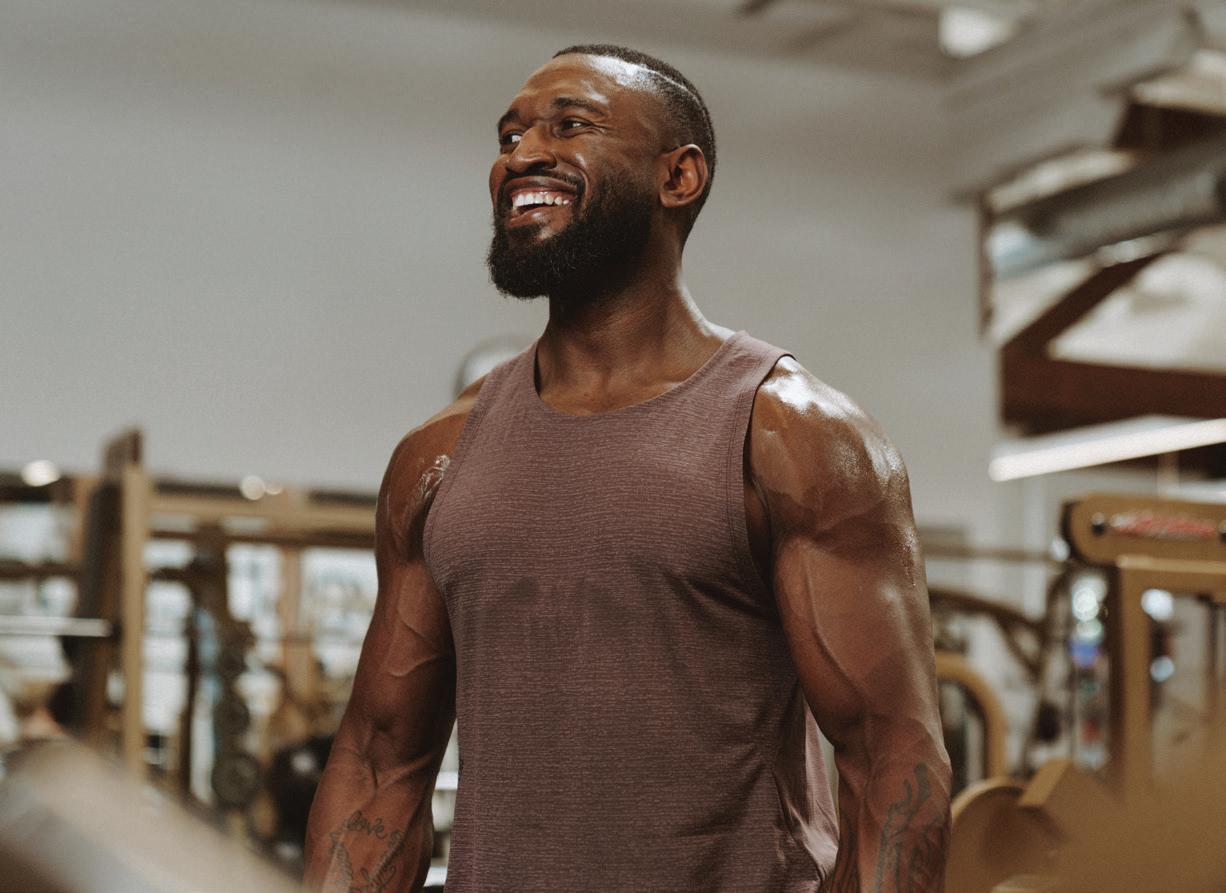
Hall leads a Barry’s At Home class
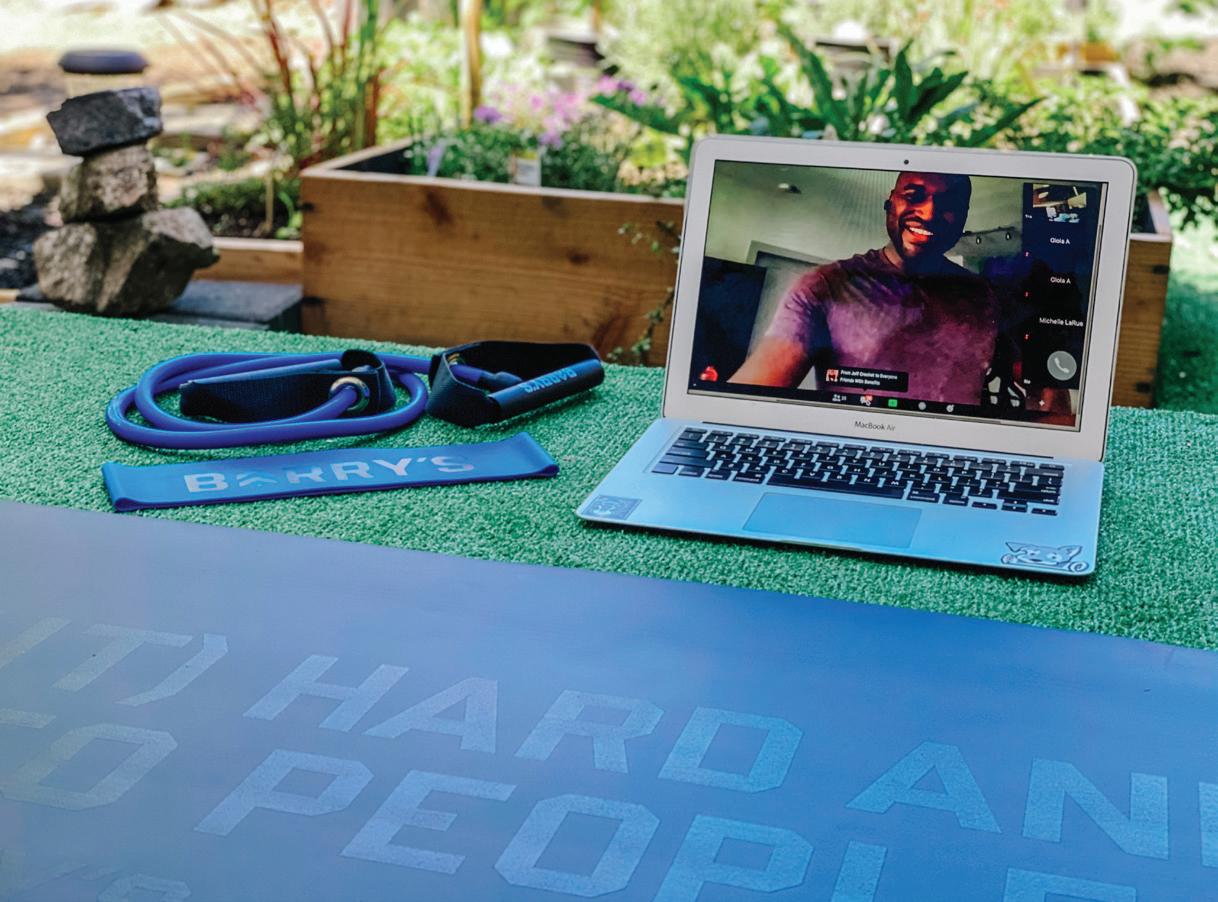

Inside the Red Room at Barry’s Bootcamp, pre-pandemic
HauteWELLNESS
SETTING THE BARRE
An industrial fan blares at me on this 95-degree day. The Zoom buffering icon disappears momentarily, and a well-lit barre studio fills my screen. I’m welcomed warmly by Jill Dailey, founder of barre fitness studio The Dailey Method, which first opened its doors in San Francisco’s Marina District two decades ago. As a leader who is passionate about improving the lives of those she teaches, her empathetic nature shines through the screen, and the atmosphere of acceptance instantly make me feel at ease. The Dailey Method touts a mission to “give people confidence, community, and a way to effect positive change in their lives,” and by the end of class I’m wondering why I haven’t been taking “Dailey Barre” (or “Dailey Express” for those in a time crunch) every day.
The Dailey Method’s approach to exercise not only works up a sweat (one that’s not due to today’s heatwave), but also focuses on strength and alignment to help achieve better posture, movement, and overall wellness. After months of sheltering in place, it feels like an eternity has passed since my body has felt this limber and free of tension.
“Motivation is hard, especially when you’re trying to do something alone in your house,” says Dailey. She recommends taking live-streamed classes rather than pre-recorded videos. (“You can’t hit pause.”) She also suggests holding yourself accountable by “making a date” with a friend and booking a class at the same time. “This is also a great way to connect and be active with family members and loved ones whom you don’t get to see right now.”
As for pushing yourself and reaping the full benefits of a class, she says: “Make yourself visible: forget about what your house or your hair looks like and put your camera on so that the instructor can see you. This will help you stay in form and also accountable to not answer the phone or start folding your laundry.”
During class, Dailey’s assistant, Steve, helps demonstrate exercises so that she can scroll through our individual screens and offer tips on proper alignment. The experience feels surprisingly personal, despite the obvious chasm between hands-on training and instruction delivered over a computer screen. “If you’re sharing your camera for feedback, make sure it’s positioned optimally on your body, so when you change positions, you won’t have to come out of the practice to adjust the screen. In general, having everything set to minimize distractions while at home will be key.”
Like others have shared, Dailey feels that many people miss the community and connection component of being in a live studio, but also believes that working out from home will become a part of our “new normal.” “[People have] realized how many online options there are and that teachers everywhere are now accessible. Due to the length of time everyone’s been at home, a lot of people have reorganized their spaces to have as home gyms, which they never had before.”
At the end of class, the Zoom chat is rife with positive messages and expressions of gratitude from all the participants. “We all—now, more than ever—need encouragement and a personal commitment to connect to ourselves and our breath,” Dailey reminds me. “Because it seems the world is spiraling right now and we have the capacity, inside ourselves, to be a part of its much-needed calibration.”
Dailey (left) leads an in-person class prior to the pandemic

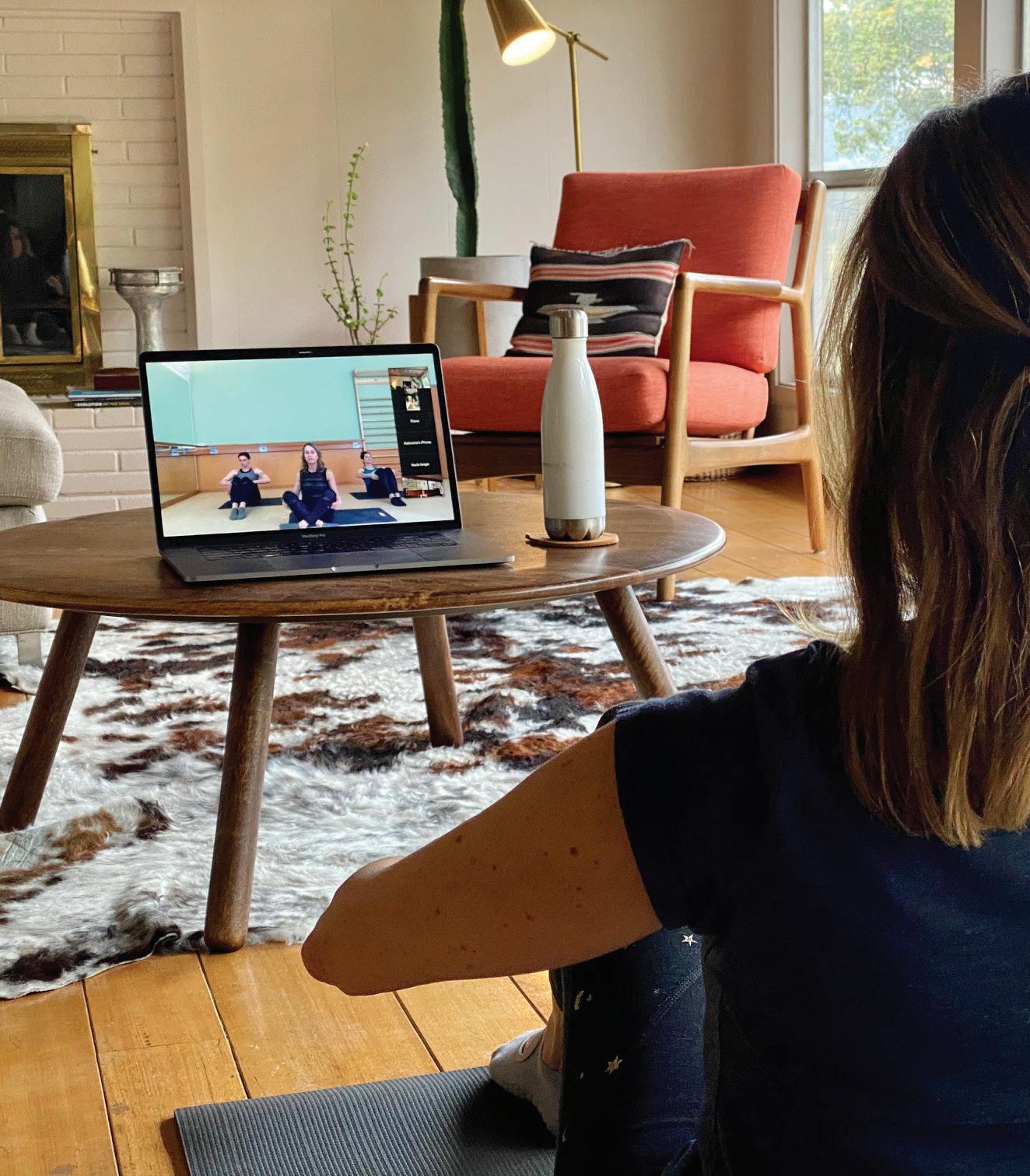
A virtual Dailey Method class
Smuin Ballet dancer Ben Needham-Wood
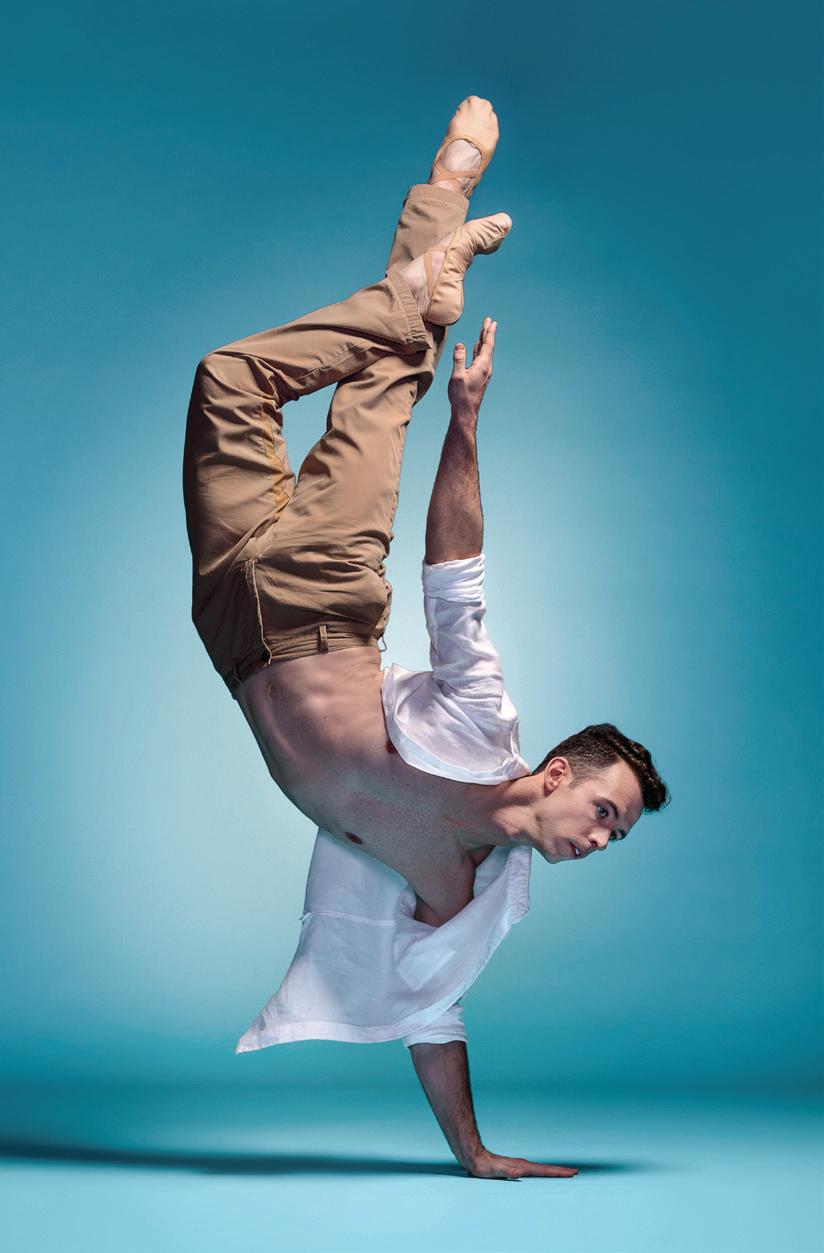
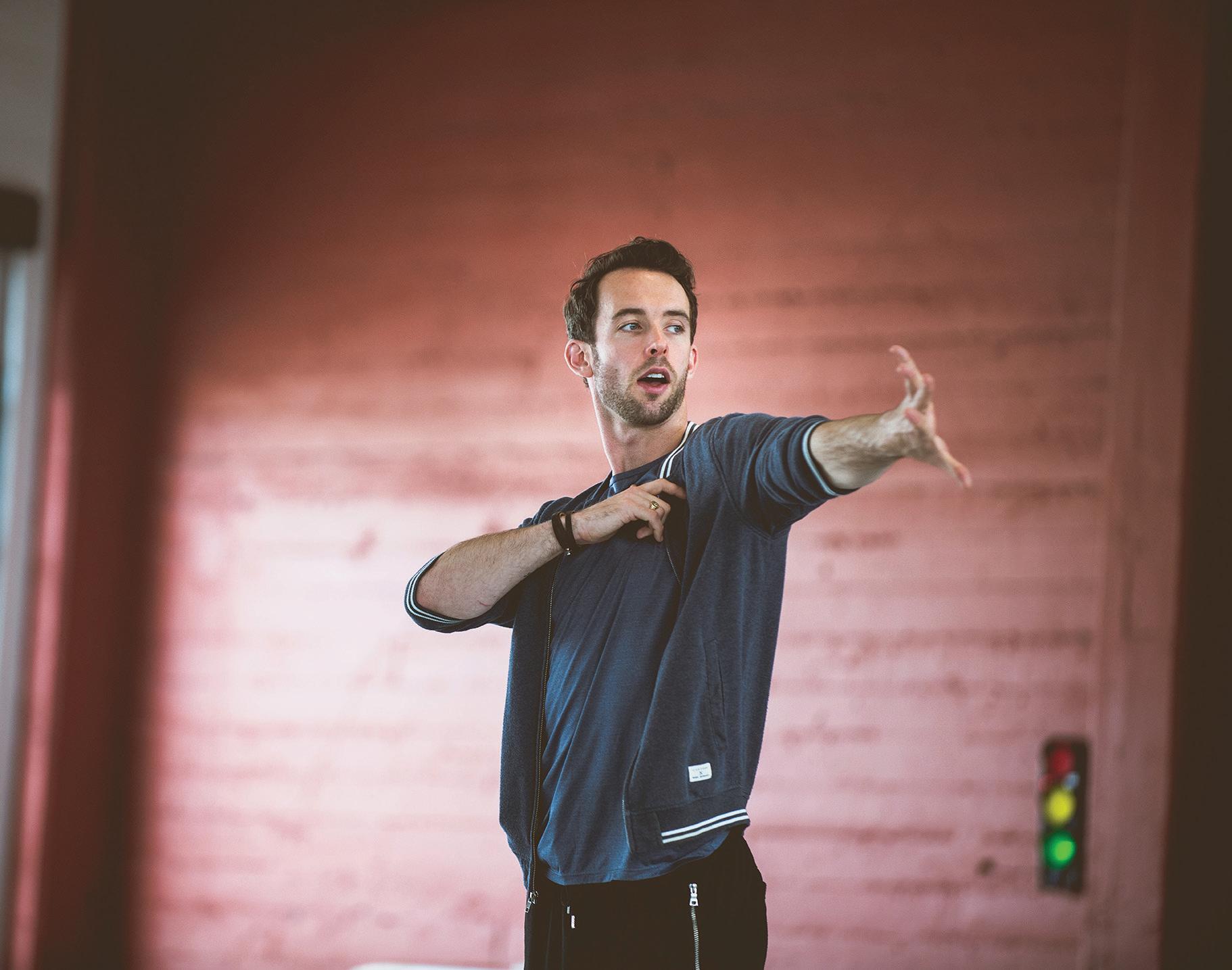
Needham-Wood is also an Emmy Award-winning choreographer
DANCE LIKE NOBODY’S WATCHING
Smuin Contemporary Ballet dancer Ben Needham-Wood moves his laptop down to the floor so we can better observe his demonstration of a proper tendu. Today, he’s teaching a class in contemporary dance direct from his San Francisco garage. “The first challenge in any big city living is making sure you have enough space to move freely,” he says. “Play some furniture Tetris in whatever room feels the most spacious and see how much floor you can free up.”
Having just begun offering in-studio classes in January, the company quickly pivoted to online offerings when San Francisco Mayor London Breed announced the order to shelter in place. From ballet to jazz and tap to hip-hop, Smuin kept its staff and dancers on payroll during the pandemic by adapting quickly to the circumstances. Rehearsals were ceased immediately, with no way for the dancers to rehearse for their spring program while practicing social distancing, and the company’s spring program was eventually canceled. However, that hasn’t stopped Smuin’s artists from sharing their art with the public.
“What’s been so readily apparent to me is that, in this socially distant time, our greatest impulse is to connect with each other. Everyone has shifted their energy towards platforms and digital communications that allow us to maintain a sense of community, even from afar,” says Needham-Wood. Aside from teaching classes, some Smuin dancers have fed their creative side through projects such as sewing masks from old costumes to donate to the MSC homeless shelter near Smuin’s studios in Potrero Hill or shooting short dance films at home with witty titles such as “Social disDANCING” and “Shelter in Pace.”
Needham-Wood announced his retirement from professional dancing at the beginning of Smuin’s 2019-20 season, and his final performance in the company’s spring program would have fallen exactly on today’s date. Instead, he’s enthusiastically leading a class of would-be dancers from across the country through a routine of sweeping motions, spins, and twirls. Despite the change in circumstances, he is positive as he reflects on this unexpected end to his dance career. “I’ve enjoyed 12 great years on stage, but in that time, I’ve enjoyed opportunities to choreograph, teach, and produce films. My next chapter is to continue exploring how I can best share dance in a meaningful way with new communities.”
He sees the new wave of online fitness as an opportunity for dancers and other artists to monetize their digital presence via subscription-based platforms such as Patreon and feels confident that this is the future. “I think the dance industry had already begun shifting toward digital content offerings, and that there are some amazing opportunities for us to actually grow our industry if we embrace new platforms.”
THE FUTURE OF FITNESS
Nearly all the instructors I speak to foresee an inevitable change in the exercise landscape, one that is just beginning and holds exciting opportunities for both trainers and clients. There will be hurdles to clear, including the question of how to generate an authentic feeling of community without interpersonal contact, but these questions will also herald a wave of creativity in the way people view and approach fitness.
Although daunting, it may be an opportunity to confront all of the fears, uncertainties, and hang-ups we’ve never been forced to face before; and to challenge ourselves to find or develop new ways to support our physical and mental health. Evans puts it best: “There is never a ‘right time’ to start. You don’t have to always be ready to go 100 percent. Listen to your body. Take breaks when you need them. Be open to trying something new, and to meeting new people on the new platforms offered. We are all in this together.”
Even if, for now, it’s only on a computer screen.










